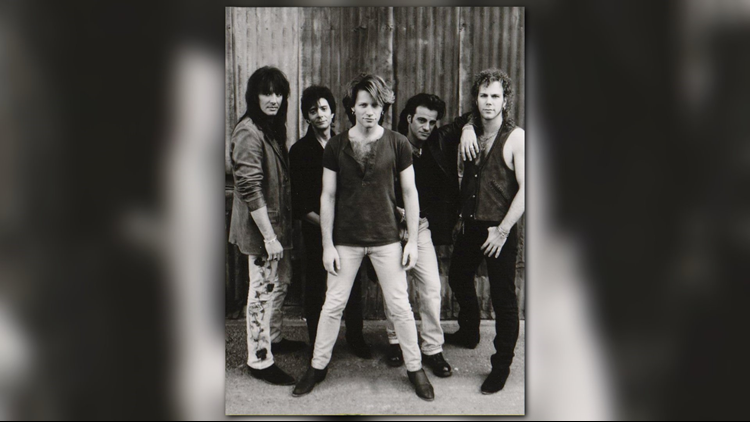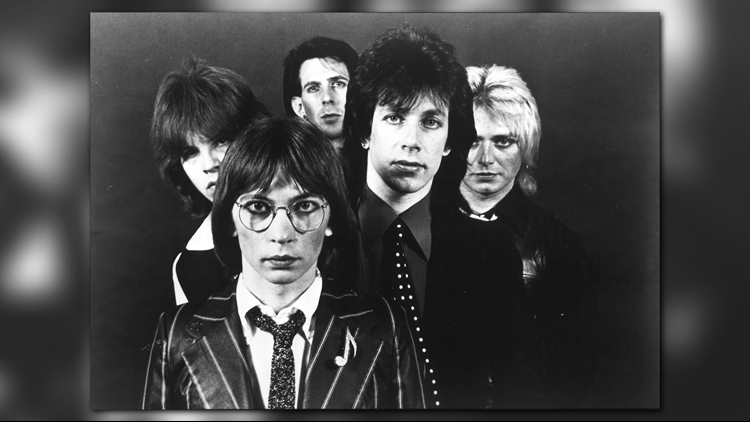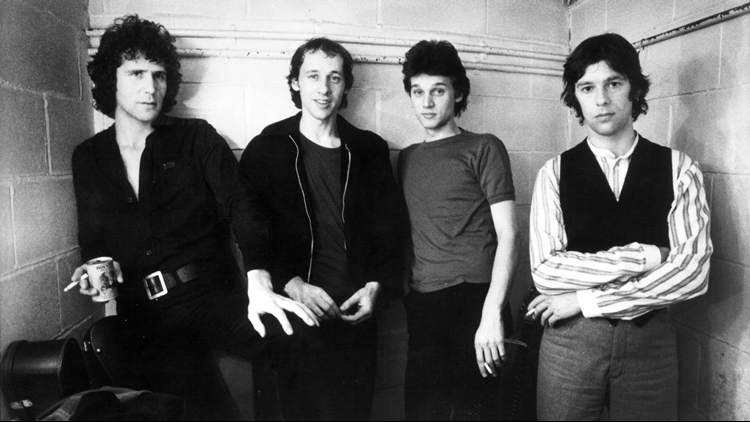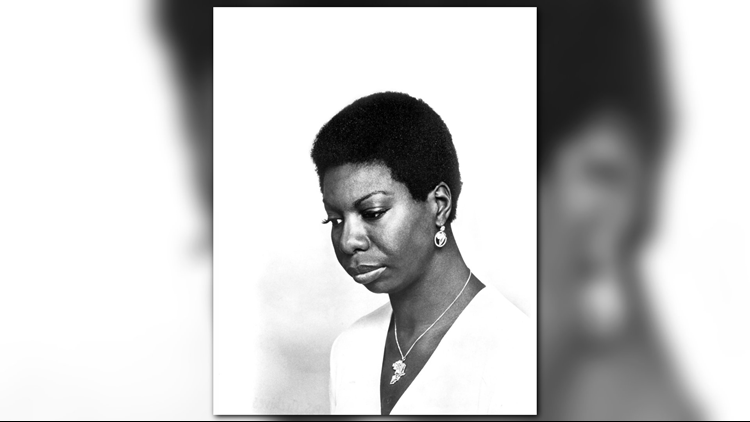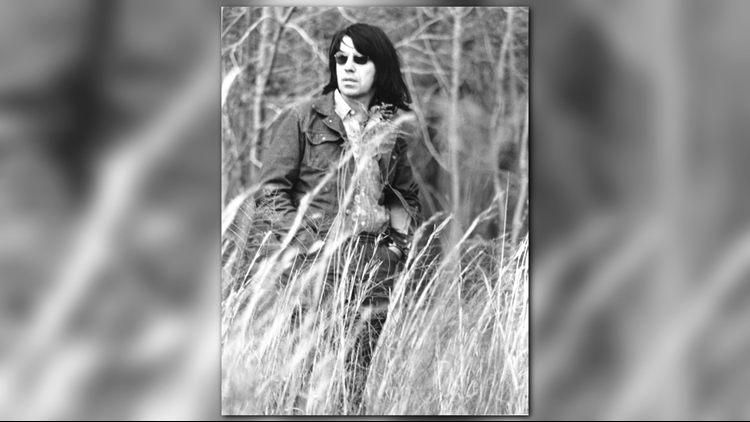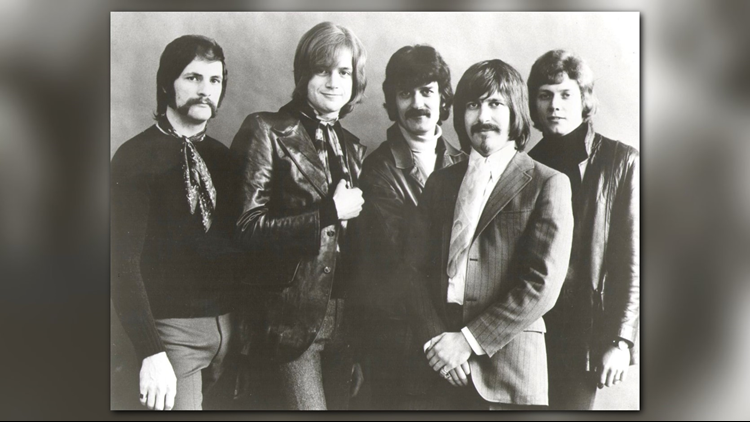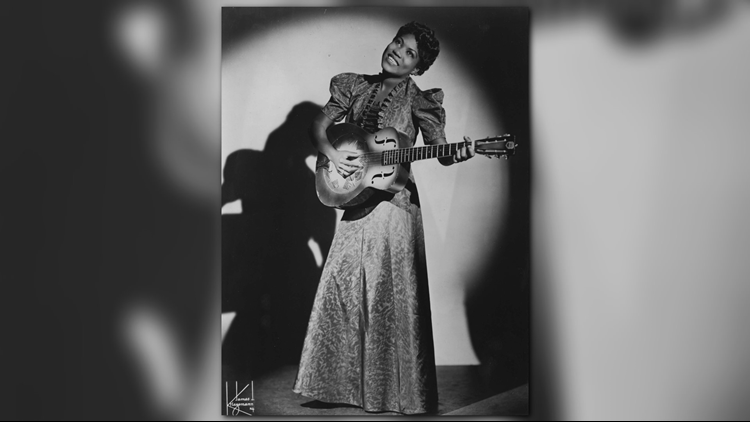CLEVELAND -- Drumroll, please...
The Rock and Roll Hall of Fame has unleashed its nominees eligible for induction in 2018.
Its list is bursting with 19 nominations, including nine first-time contenders like Moody Blues, Judas Priest and Rage Against the Machine.
Those selected for induction will be announced in December after being chosen by a committee of more than 900 people, including former inductees, historians and members of the music industry. Factors for induction are musical influence on other artists, length / depth of career and innovation.
Fans can have their say, too, by casting a ballot for their picks. CLICK HERE to vote.
PHOTOS | Rock Hall induction nominees for 2018
The 2018 induction ceremony will be held April 14 in Cleveland’s historic Public Hall. An edited version will air on HBO at a later date.
To be eligible for induction, an individual artist or band must have released their first commercial recording at least 25 years prior.
Did your favorite make the list? See all 19 nominees below...
BON JOVI
Previous induction nominations: 2011
Year first eligible: 2008 (2009 ceremony)
Members included: Jon Bon Jovi, David Bryan, Tico Torres, Alec John Such, Richie Sambora

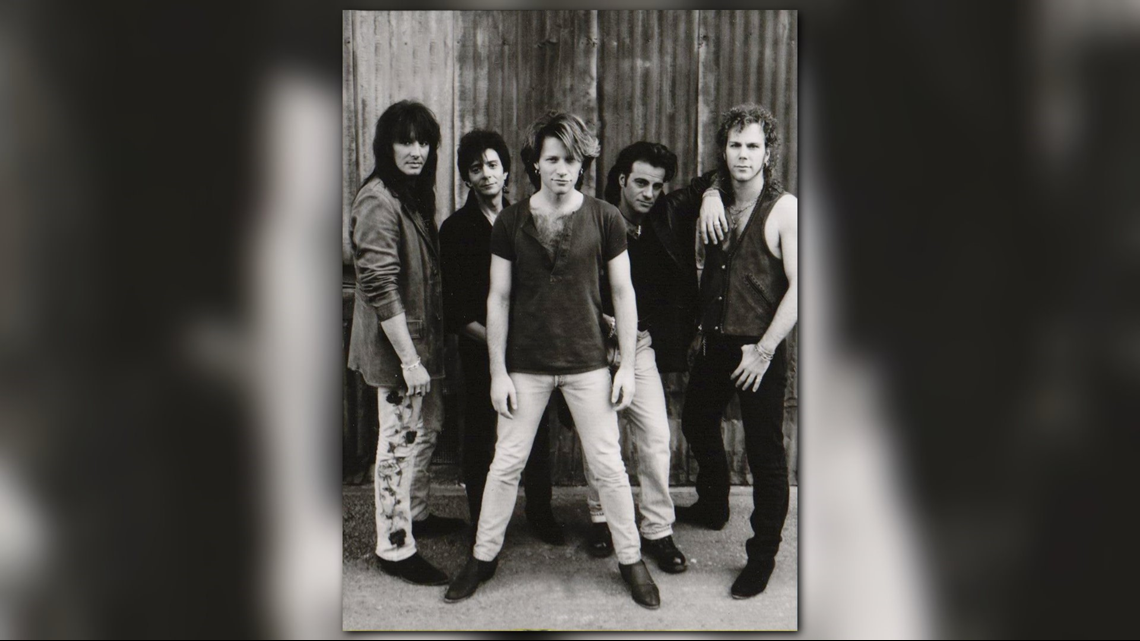
Hard-working musicians and prolific songwriters from blue-collar backgrounds in New Jersey, Jon Bon Jovi, Richie Sambora, David Bryan, Tico Torres and Alec John Such created a dedicated global following that spans every continent.
Along the way, they have carved out a place on the charts with their most familiar songs: “You Give Love A Bad Name,” “Livin’ On A Prayer,” “Bad Medicine” and “I’ll Be There For You” in the ’80s; “Blaze Of Glory,” “Bed Of Roses” and “Always” in the ’90s; “It’s My Life,” “Have A Nice Day,” the Grammy-winning “Who Says You Can’t Go Home” and “We Weren’t Born To Follow” in the 2000’s.
Beyond the numbers – more than 120 million albums sold, more than 2,600 concerts performed in more than 50 countries for more than 34 million fans, including 2017’s This House Is Not For Sale tour -- there is also Bon Jovi’s enormous influence on innumerable young bands seeking to follow in their footsteps.
Despite personnel changes over the years, Bon Jovi steadfastly follows their own instincts, ignoring obvious trends and providing a model for other bands and musicians just starting out on their careers.
---
KATE BUSH
Previous induction nominations: Never
Year first eligible: 2003 (2004 ceremony)
Members included: Kate Bush


Kate Bush has maintained a level of control and integrity within her spellbinding music that few artists have matched – especially remarkable for a singer, multi-instrumentalist, writer and producer in a field where, even today, a very small percentage of producers are women.
In 1980, Bush was the first British solo female artist to have a #1 album on the UK charts. More than three decades later, in 2014, on the heels of her historic return to the stage in London, Bush had eight albums on the chart simultaneously – the first woman in history to do so. As critic Owen Myers wrote in The Fader, “Unfazed by a lack of precedent to her visions, Bush’s genre spanning music didn’t just push pop forward with its embrace of avantgarde styles [but] left the tools for other artists to do the same.”
She opened the door for women to experiment more radically in their music and imagery, inspiring Björk, Lady Gaga, Solange, Tori Amos and countless others. Her early use of sampling won her hip-hop admirers including Big Boi and Tupac. And her highly stylized music videos and performances, which combined dance, mime, magic and theater, were novel in 1978 but “set a benchmark for people’s shows in the future,” per Elton John.
Now, virtually every performer is expected to pair visual spectacle or choreography with music. How would most pop artists tour without the headset microphone, created for Bush’s 1979 “Tour Of Life”?
“The direction I’m going in in my art is the way I want to go,” Bush said in 1982.
This autonomy, dedication to her unconventional visions, and insistence on pushing herself creatively -- often against the advice of her studio bosses -- changed the world in unexpected but profound and indelible ways, not only for musicians but for all of us who dare to imagine the world as a more magical place.
---
THE CARS
Previous induction nominations: 2016, 2017
Year first eligible: 2003 (2004 ceremony)
Members included: Ric Ocasek, Greg Hawkes, Elliot Easton, David Robinson, Benjamin Orr

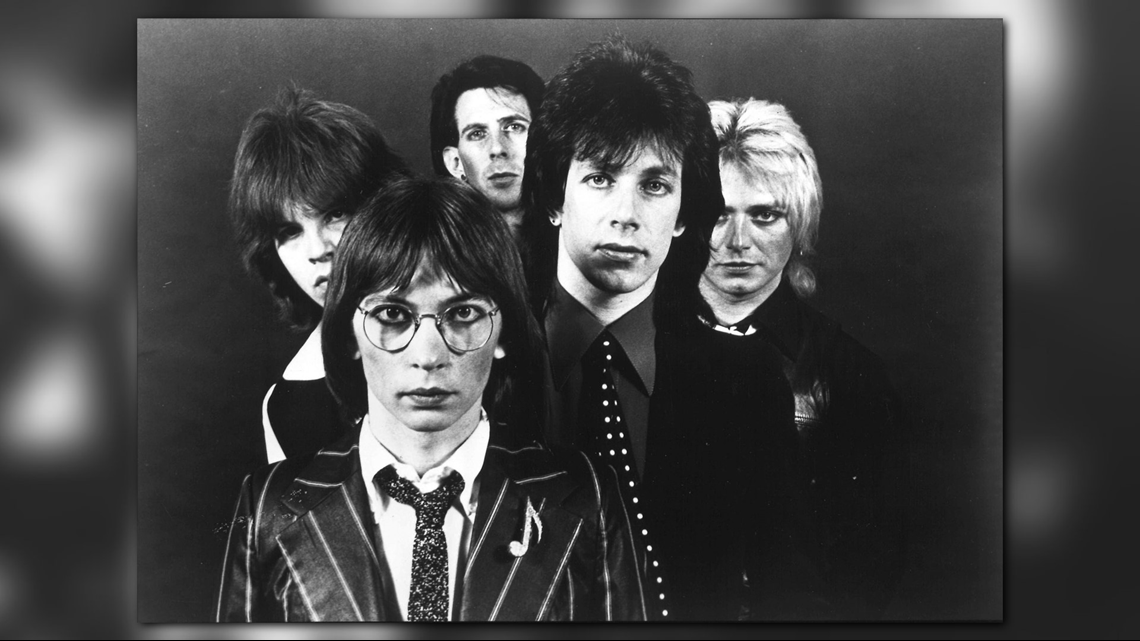
Founded in Boston in 1976 by singer-guitarist-songwriter Ric Ocasek and singer-bassist Benjamin Orr, the Cars were the ultimate New Wave dream machine: a hook-savvy super-charged quintet that fused 60s pop, 70s glam and avant-rock minimalism into a decade of dashboard-radio nirvana.
The band has a connection to Northeast Ohio as Orr was born in Lakewood on Sept. 8, 1947. He died Oct. 3, 2000 in Atlanta and is laid to rest locally at Saint Patrick Cemetery in Geauga County's Thompson Township.
Their epic ride of 13 Top 40 singles across six classic studio albums – including four straight Top 10 LPs – drove the fury and intellectual adventure of punk rock out of the underground, firmly and forever into the American mainstream.
Former hippie-folk compatriots, Ocasek and Orr were a natural yin-yang; Orr polished the terse, melodic grip and experimental vigor in Ocasek's songs with vocal-dreamboat magnetism. Guitarist Elliott Easton's rockabilly and surf-rock flourishes, Greg Hawkes' ingenious keyboard science and drummer David Robinson's futurist-Charlie Watts backbeat completed the design, already honed to maximum appeal on the Cars' 1978 self-titled debut album. That record's first three tracks, "Good Times Roll," "My Best Friend's Girl" and "Just What I Needed," were all hit singles.
Heartbeat City was the Cars' commercial apex, a Number 3 album that featured the ravishing ballad, "Drive," sung by Orr with broken-heart perfection. The group broke up in the late 80s. But the Cars' visionary bravado was evident in the 90s alternative-rock boom.
Nirvana played "My Best Friend's Girl" at their last-ever show in 1994, while Ocasek became a producer-of-choice for younger bands such as Weezer and Bad Religion. Orr's death seemed to end any hope for a Cars reunion – until 2011, when the surviving members issued Move Like This, a new studio album that proved the Cars always sound like this year's model, in every decade.
---
DEPECHE MODE
Previous induction nominations: 2017
Year first eligible: 2006 (2007 ceremony)
Members included: Martin Gore, Dave Gahan, Andy Fletcher, Alan Wilder, Vince Clarke

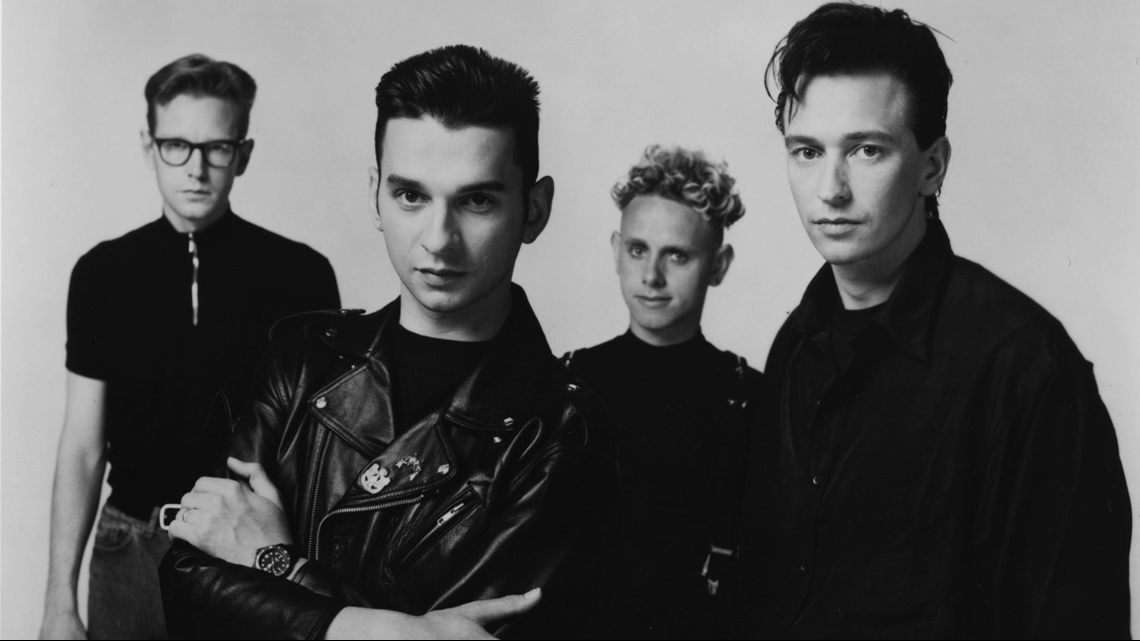
How does any band remain at the cutting edge for over three decades? Depeche Mode have spent their long and unique career exploring new realms of postpunk, electronic textures and futuristic industrial sounds, with one of the all-time charismatic frontmen in Dave Gahan and a songwriting legend in Martin Gore.
Depeche Mode burst from the U.K. town of Basildon in 1981 with the New Romantic synth-blast of Speak And Spell, as tunesmith Vince Clarke brought his sense of pop classicism to the dance floor in hits like “Just Can’t Get Enough” and “Dreaming Of Me.” When Clarke left the group (to make inventive records with his groups Yaz and Erasure), Gore stepped up to become one of his generation’s most influential songwriters, with his own black-leather blend of existential despair, erotic kink, political bite and sly wit. Depeche Mode built a diehard cult – and helped invent the goth subculture – with groundbreaking hits like “Master And Servant” (1985), “Stripped” (1986), “A Question Of Lust” (1986) and “Never Let Me Down Again” (1987) – while their electro reboot of “Route 66” showed off their wry take on the R&B verities. Black Celebration (1986) and Music For The Masses (1987) led to Depeche Mode’s masterwork Violator (1990), blending ominous synths with rock guitar for classics like “Personal Jesus” and “Enjoy The Silence.” Their newfound flair for the blues exploded in the goth-grunge swamp gospel of 1993’s Songs Of Faith And Devotion (“Walking In My Shoes”), as well as, recent global hits like Playing The Angel(2005) and Delta Machine (2013).
Depeche Mode have kept evolving through the Nineties and beyond, remaining a legendarily fearsome live act across the planet, with a foot in the underground and another in the club – but always with an eye on the future.
---
DIRE STRAITS
Previous induction nominations: Never
Year first eligible: 2003 (2004 ceremony)
Members included: Mark Knopfler, John Illsley, Pick Withers, David Knopfler, Alan Clark, Guy Fletcher

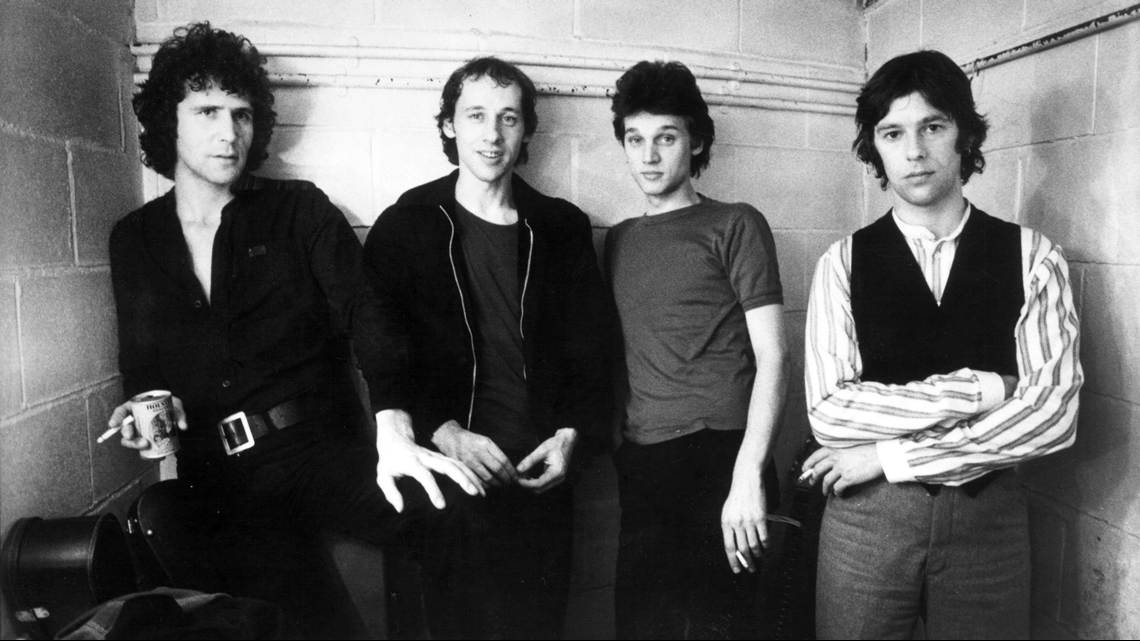
The opening lines of Dire Straits’ “Brothers In Arms” – “These mist-covered mountains / Are now home to me / But my home is the lowlands / And always will be” – describes the career arc of a band who never lost touch with the inspiration and wellspring of creativity with which they began, even as they ascended the heights of worldwide phenomenon under the leadership of lead guitarist Mark Knopfler.
Their common touch was evident in their first hit single from 1978, “Sultans Of Swing,” which described with affection a group of musicians who play for the love of the sound they ensemble rather than fame or fortune.
Counterpointed with Knopfler’s stinging, uniquely melodic, and clean-edged guitar, Dire Straits stood in direct contrast to the punk rock enveloping London at the time; and they would refine their aspirations continually until the landmark 1985 Brothers In Arms.
Capturing the MTV cultural moment with “Money For Nothing,” simultaneously satirical and yet open-hearted to how the public perceives a musician, or sympathetically illuminating the sibling warfare and unlikely hard-won battlefield camaraderie of quarreling nations that scars our times in the title track, Dire Straits – and later, Knopfler’s solo career – presented a music that never shied from the complexities of the human relationship, or the soaring guitar solos that give us the will to rise above such potentially divisive conflicts.
With a universally acknowledged virtuoso musician, lyrically ornate and emotionally charged, Dire Straits set a standard of excellence and achievement that continues to resonate, a reputation that has only grown through the years. A band for all time.
---
EURYTHMICS
Previous induction nominations: Never
Year first eligible: 2006 (2007 ceremony)
Members included: Annie Lennox, David A. Stewart

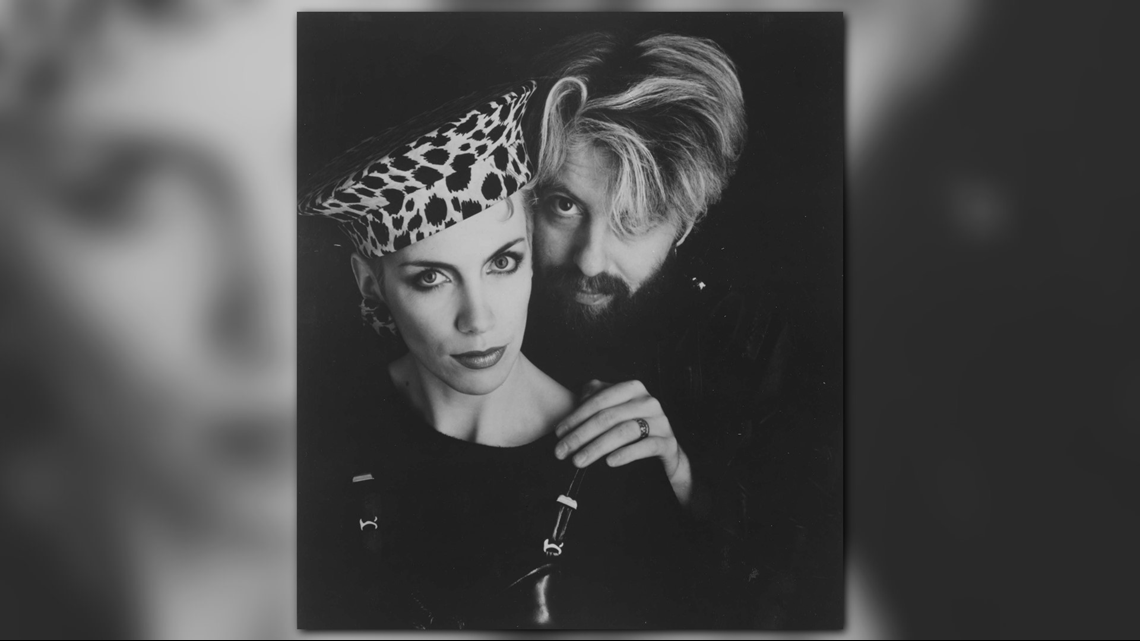
Eurythmics collaborators Annie Lennox and Dave Stewart profoundly impacted ’80s pop-rock – and subsequent iterations of music into the present day. Through their lyrics and imagery, they presaged a rising gender-bending consciousness in the mainstream, with songs, videos, and live performances featuring the androgynous Lennox singing from a perspective of unabashed strength.
The stories the band told, through song and theatrics, spoke to a broader sense of what it meant to live and love in the late 20th century. Musically, the magnificent-voiced Lennox and experimentalist producer/multi-instrumentalist Stewart employed heretofore-unheralded influences, like the mechanistic funk of Krautrock, the grit of gospel, and the trippiness of psychedelia. Their uniquely textured music was both futuristic and beholden to past eras, while remaining eminently accessible, irresistibly tuneful.
Guitars still ruled when Eurythmics hit big in 1983, but initially Lennox and Stewart eschewed them in favor of analog synthesizers, sequenced to produce bedrock bass lines of melodic depth, heard most obviously in their breakout hit “Sweet Dreams (Are Made Of This).”
Strikingly, when Eurythmics abandoned some of the sonics that fueled their original success, they found continued acclaim. While the songcraft remained catchy, Stewart pushed his decidedly rock guitar way up in the mix on “Would I Lie To You?” and added lush orchestral arrangements to “Here Comes The Rain Again.” The duo’s sound expanded to the big-band style of strings and horns, which effortlessly pivoted from rock to R&B.
Lyrically, Eurythmics never feared delving into controversy, taking on colonialism in “Missionary Man” and raw sexual hunger in “I Need A Man.” The band split in 1990, but fortunately for their millions of fans, Eurythmics have reconvened on occasion, most recently in 2014.
---
J. GEILS BAND
Previous induction nominations: 2005, 2006, 2011, 2017
Year first eligible: 1995 (1996 ceremony)
Members included: J. Geils, Stephen Jo Bladd, Magic Dick, Danny Klein, Seth Justman, Peter Wolf

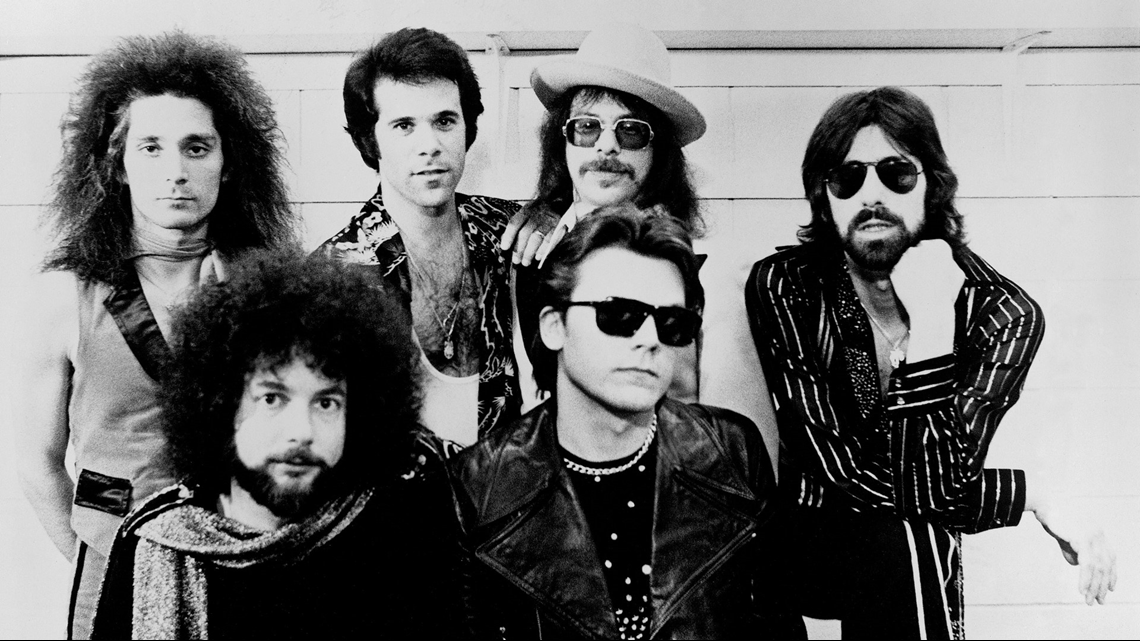
Those who know the J. Geils Band only for their MTV era hits (“Love Stinks,” “Centerfold,” “Freeze Frame”) don’t know the J. Geils Band at all. During the long years between the demise of the Butterfield Blues Band and Mitch Ryder’s Detroit Wheels and the rise of Bruce Springsteen, Bob Seger and Tom Petty, the J. Geils Band kept alive a joyful and very American brand of R&B-based rock and roll.
Led by Jerome Geils’ blues guitar and Magic Dick’s virtuoso harp, the bedrock rhythm of bassist Danny Klein and drummer Stephen Jo Bladd, keyboard player/composer Seth Justman, and the inexhaustible Peter Wolf up front, Geils was a party band with heart, brains and a wide range of styles – from deep blues (“Serve You Right To Suffer”) to soul (“Looking For A Love”), doo-wop (“I Do”) and funk (“Flame Thrower”). The band could write a country song so convincing it was covered by Gram Parsons and Emmylou Harris (“Cry One More Time”) and even came up with the first U.S. reggae hit (“Give It To Me”). With 1977’s Monkey Island and 1978’s Sanctuary the bad boys from Boston explored darker themes before going for a streamlined, radio-friendly sound with Love Stinks (1980) and Freeze Frame (1981), which hit number one on both the U.S. singles and album charts. Shortly after that, the band broke up. They put in fifteen years of hard work. They went out on top.
---
JUDAS PRIEST
Previous induction nominations: Never
Year first eligible: 1999 (2000 ceremony)
Members included: Ian Hill, Glenn Tipton, Rob Halford, Scott Travis, Les Binks, Dave Holland, K. K. Downing

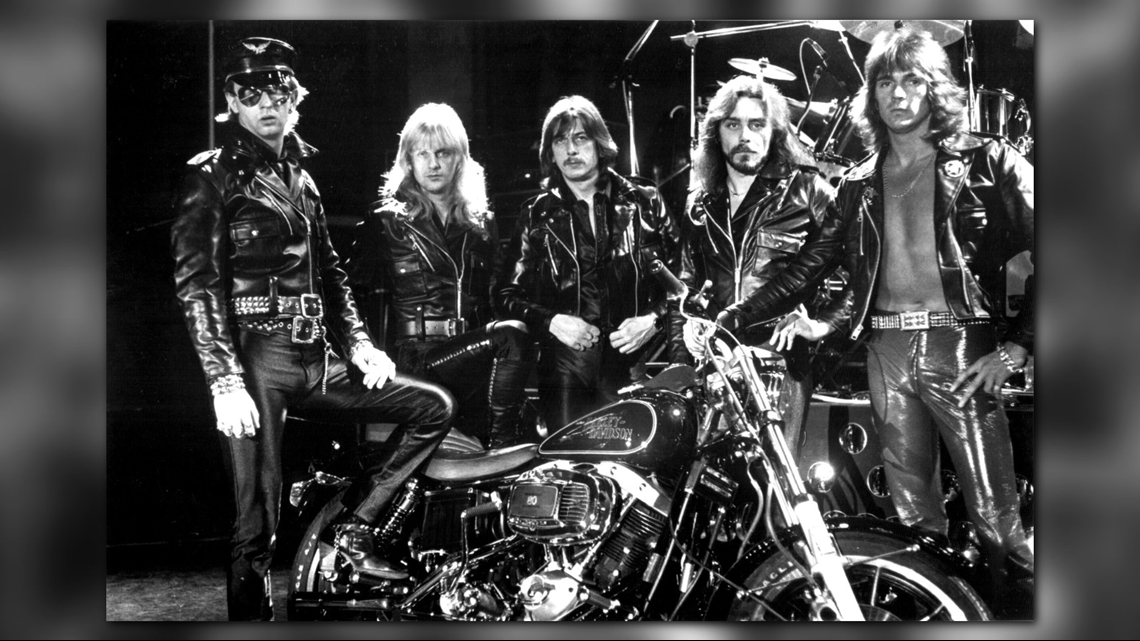
If you’ve seen Judas Priest live you’ll know the powerful force of their dual guitar attack, driving riffs, soaring operatic vocals, the unapologetic sound of heavy metal played at its absolute best. The roots of the band go back as far as 1969, but it was when vocalist Rob Halford and second lead guitarist Glenn Tipton joined guitarist K. K. Downing and bassist Ian Hill in the Seventies that their unique sound started to take real shape.
In 1980, they released British Steel , the album that would propel the band beyond the world of metal and hard rock, starting a run of platinum selling albums and onto mainstream radio with “Living After Midnight” and “Breaking The Law.” They are a band whose message of being yourself and loving the music you love – regardless of trends – resonates all over the world. Rob Halford is a pure singer with incredible range who is considered the best of the best by all fans of metal. His studded leather, biker inspired, visual look was adopted by many metal bands who followed.
Rob is also openly and proudly gay and has led an entire genre of bands and fans towards a more enlightened understanding and inclusiveness. Having endured a number of line-up changes over the years they are still performing today with a new album scheduled to come out next year.
The list of bands who have taken inspiration from Judas Priest is long and wide including everyone from Metallica and Slipknot to Pearl Jam and Rage Against The Machine. After almost 50 years, they are still at the top for their game with intense live performances and commitment to a genre they helped define.
---
LL COOL J
Previous induction nominations: 2010, 2011, 2014
Year first eligible: 2009 (2010 ceremony)
Members included: LL Cool J

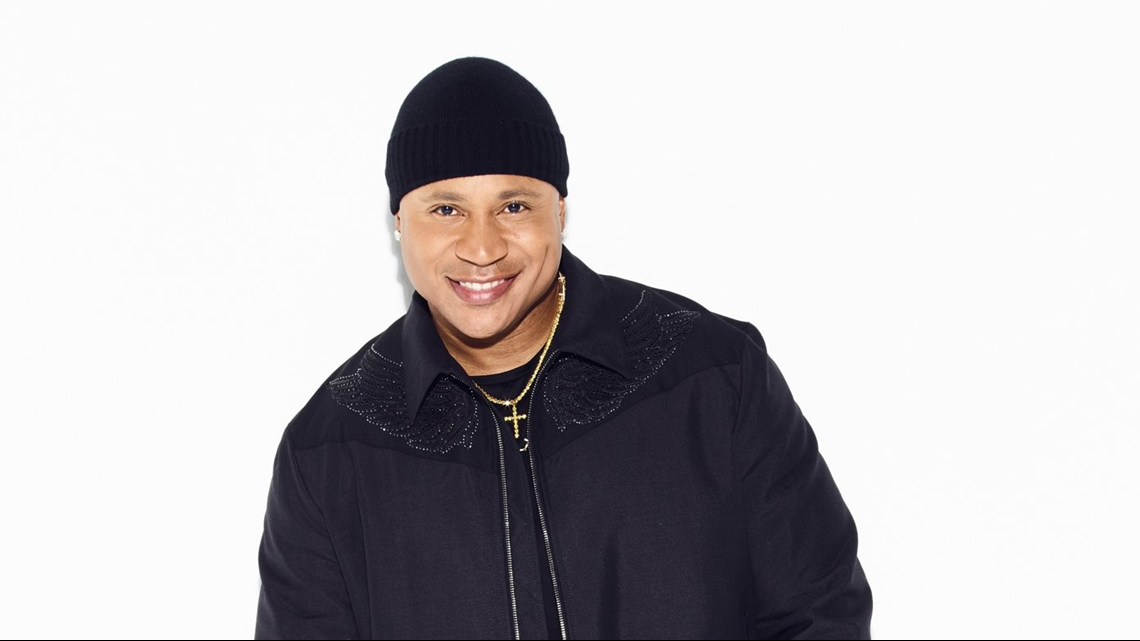
Born James Todd Smith in Bay Shore, NY, LL Cool J has always had his sights set on rock & roll. LL was only 17 in 1985 when he recorded “Rock The Bells,” which included the following couplet: “It ain’t the glory days with Bruce Springsteen/I’m not a virgin so I know I’ll make Madonna scream.”
A year earlier, LL had made his debut on Def Jam, which was also the debut of the label itself. His first two singles – “I Need A Beat” followed by “I Want You” – sketched out the two main gears of his career: testosterone maddened battle raps and tender, sexy love songs. The former included “I Can’t Live Without My Radio” (1985), “Jack The Ripper” (1987) and “Mama Said Knock You Out” (1991).
The stylish aggression built into these songs influenced no less a figure than Michael Jackson, who cut “Bad” after meeting LL in person – and after LL himself cut “I’m Bad.” The love songs may have been even more influential and popular.
When “I Need Love” went to Number One on Billboard’s Hot R&B Singles chart in 1987, it was the first rap recording ever to reach that summit.
His success in music has served as a launching pad to concurrent careers in the movies, on television, in fashion, and in fitness.
---
MC5
Previous induction nominations: 2003, 2017
Year first eligible: 1991 (1992 ceremony)
Members included: Wayne Kramer, Fred "Sonic" Smith, Rob Tyner, Michael Davis, Dennis Thompson

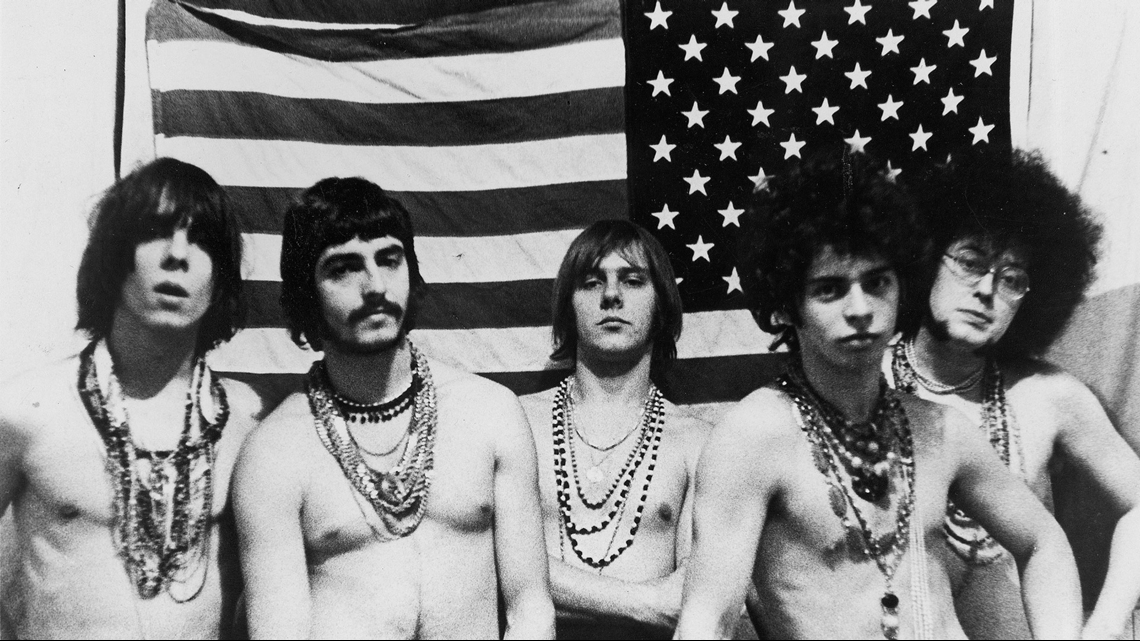
Everything about Detroit-formed rabble-rousers the MC5 screamed revolution. The group espoused sex, drugs and rock 'n' roll, as well as the kind of radical politics and countercultural rebellion that started to boil over in the late '60s. Musically, the MC5 aggressively assimilated disparate styles: Not only were the Motor City's soul/R&B groups a major influence—as heard especially through vocalist Rob Tyner's unhinged howls—but the band also incorporated scorching blues riffs, sprawling free jazz flourishes and a fondness for scuzzy garage-rock.
It also helped that the members of the MC5—which, besides Tyner, included guitarists Wayne Kramer and Fred "Sonic" Smith, bassist Michael Davis and drummer Dennis Thompson—surrounded themselves with revolutionary people and ideas. Writers such as Allen Ginsberg, Charles Olson and Ed Sanders were idols, while band manager John Sinclair co-founded the anti-capitalist, anti-racism White Panther Party, which was formed to be an ally to the Black Panther Party. In summer 1967, Kramer even had a bird's-eye view of the Detroit riots from his bedroom window. In other words, the members of the MC5 were in the thick of a burgeoning cultural insurgency—and relished the opportunity to do everything they could to stoke the fires of rebellion.
The group evolved to adopt this mindset after Sinclair took over as manager in 1966. Prior to that, the fledgling MC5 was performing around the Detroit area, honing its live show and trying to figure out a solid direction. However, this focus on concerts, when coupled with Sinclair's presence, helped the band flourish: By the end of 1966, the MC5 was a weekend staple at Detroit's newly opened Grande Ballroom, which eventually led to support slots for Cream and Big Brother & The Holding Company.
More notably, in 1968, the MC5 performed on the opening day of Chicago's Festival of Life, a multi-day event steered by the radical, counterculture-embracing Yippies. For the band, the invitation was an easy one to accept: Because the fest took place during the contentious 1968 Democratic National Convention, an appearance offered a high-profile chance to protest the pro-war policies relating to Vietnam. Although the stage was nonexistent—archival footage shows the MC5 thrashing among throngs of people—and the performance only lasted about 40 minutes, the show looms large in the band's mythology.
In the weeks after, the MC5 inked a record deal with Elektra Records. Over Halloween weekend, the band decamped to the Grande Ballroom to record what would become its debut LP, Kick Out The Jams. Appropriately, the resulting 1969 album was an incendiary document of the band's live experience, something at once gloriously chaotic and deeply inspiring. Buoyed by the indelible "Kick Out The Jams"—which started with the inimitable line, "Kick out the jams, motherf*ckers!"—and plenty of charred rock 'n' roll (the Sun Ra-interpolating, spacey sprawl "Starship"; the ramshackle, garage rocker "Rocket Reducer No. 62-Talk"), the album remains a proto-punk milestone.
The profanity present on the LP caused friction with several retailers, including department store Hudson's, which declined to carry Kick Out The Jams. In response, the MC5 decried the ban by taking out an ad featuring a well-placed f-bomb and (unbeknownst to the label) Elektra's logo. After Hudson's retaliated by stopping the sale of all Elektra releases, the MC5 lost its record deal. Undeterred, the band jumped ship to Atlantic Records for a pair of albums. 1970's compact Back In The USA dabbled in wiry, brittle garage-pop and proto-punk, while 1971's High Time was a heavier, hard-rock-leaning effort full of gnarled and (at times) psychedelic-scarred riffs.
The MC5's intense years of hard living soon caught up to it, however. Sinclair went to jail in 1969 for giving two marijuana joints to an undercover police officer, while the original lineup also disintegrated: Bassist Davis left in early 1972, and by the end of the year both Tyner and Thompson had also departed. Kramer and Smith soldiered on with replacements, but after a disastrous, poorly attended New Year's Eve 1972 reunion gig, the MC5 dissolved.
Still, the band's legend lived on via some prominent figures. In the '70s and '80s, political punk rockers such as Bad Brains, Black Flag, the Damned and Circle Jerks ended up as the MC5's spiritual and sonic descendants. The strident activism of '90s rock band Rage Against The Machine and the frenetic sound of At The Drive-In, meanwhile, both owed much to the band. The career of Rock & Roll Hall of Famers the Stooges also might never have taken off without the MC5: After all, Danny Fields, the Elektra Records rep that signed the latter, also scooped up Iggy Pop & co. at the same time.
The members of the MC5 also worked to keep the band's legacy in the spotlight. After Tyner's 1992 death, the surviving members of the band reunited at a tribute show in his honor. Smith died in 1994, and a decade later, Kramer, Thompson and Davis started touring again under the name DKT/MC5 with punk legend Handsome Dick Manitoba on vocals. This incarnation lasted until Davis' 2012 death.
Seeing as how the MC5 is so resilient, it's no surprise that political rock supergroup Prophets of Rage (which features three-fourths of RATM) and Dave Grohl recently teamed up to cover "Kick Out The Jams." In the '60s, the MC5's incendiary music was the backdrop to protest the concerns of the day—to name a few, police brutality, war and racism. Today, these topics remain pressing societal issues, which makes the MC5's rhetoric and music just as relevant and vital than ever.
Watch them perform "Kick Out The Jams" (warning: explicit language):
---
THE METERS
Previous induction nominations: 1997, 2013, 2014
Year first eligible: 1994 (1995 ceremony)
Members included: Joseph Modeliste, Art Neville, Cyril Neville, Leo Nocentelli, George Porter Jr.

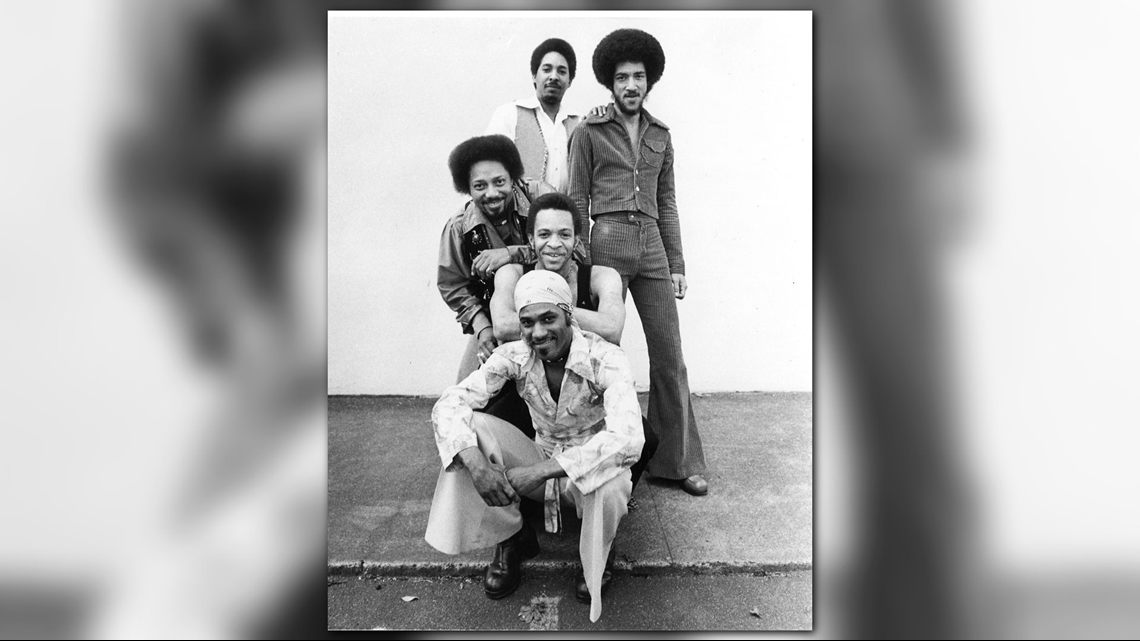
James Brown, Sly and the Family Stone and Parliament-Funkadelic all coasted into the Rock and Roll Hall of Fame. Yet one of the true cornerstones of funk is still waiting for induction.
The Meters were not only the leading instrumental unit to emerge from the great musical gumbo of New Orleans, they were also one of the tightest and hardest-grooving ensembles R&B has ever seen. The Meters formed in 1965 with a line-up of keyboardist and vocalist Art Neville, guitarist Leo Nocentelli, bassist Geroge Porter Jr. and drummer Joseph “Zigaboo” Modeliste; the group was later joined by percussionist/vocalist Cyril Neville. The Meters first came to local prominence as the house band for Allen Toussaint’s record label, Sansu.
In 1969, the band went on its own and released a string of definitive, irresistibly slamming singles - “Sophisticated Cissy,” “Cissy Strut,” “Look-Ka Py Py” and “Chicken Strut.”
In the years that followed, the band became one of the hottest session groups in the world, working with Paul McCartney, Robert Palmer and LaBelle. They recorded extensively with their homeboy Dr. John, including his Desitively Bonnaroo album and the smash hit “Right Place, Wrong Time,” and provided the musical backbone for such modern New Orleans classics as The Wild Tchoupitoulas and the Neville Brothers’ Fiyo On The Bayou.
With the explosion of hip-hop, the group became familiar to a new audience when its records were sampled countless times by the likes of RUN DMC, N.W.A., Public Enemy and the Beastie Boys. Meters songs have been covered by everyone from the Red Hot Chili Peppers to the Grateful Dead, illustrating the far-reaching influence of these masters of funk.
---
THE MOODY BLUES
Previous induction nominations: Never
Year first eligible: 1989 (1990 ceremony)
Members included: Justin Hayward, Graeme Edge, John Lodge, Ray Thomas, Mike Pinder

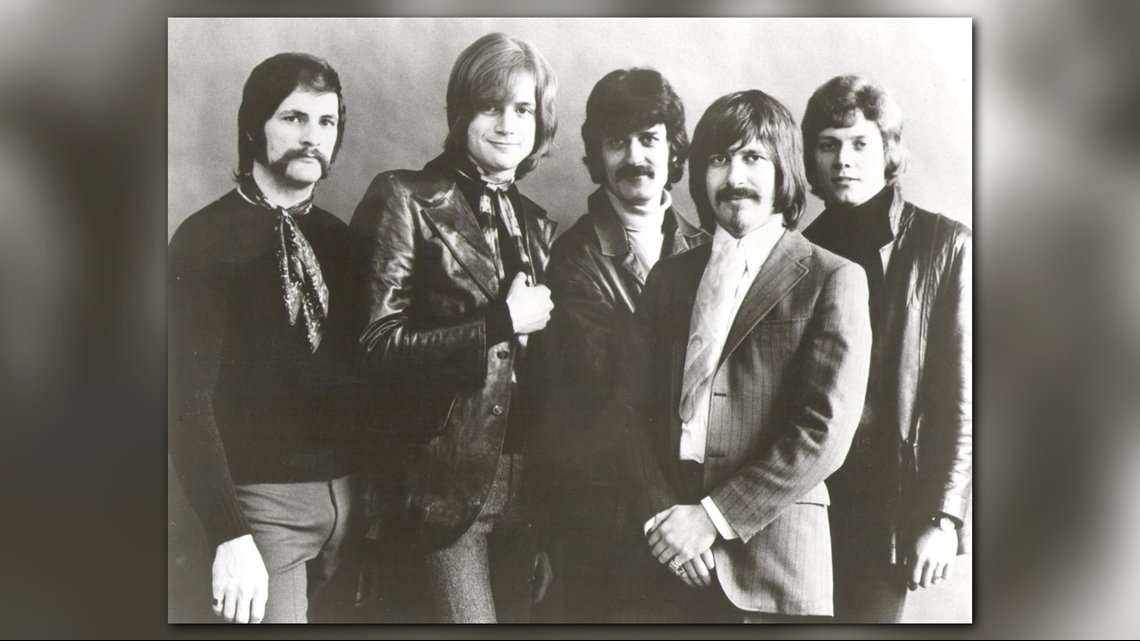
Formed in 1964 by Ray Thomas, Mike Pindar, and Graeme Edge the Moody Blues quickly rose to fame as a rhythm and blues based rock band, and within the year they had scored their first hit single in the UK, “Go Now.” What happened next is one of the all-time great transformations in rock and roll history.
After the addition of John Lodge and Justin Hayward in 1966, the band worked with producer Tony Clarke to record the landmark concept album Days Of Future Passed. The record mixed symphonic orchestrations with a psychedelic rock band singing soaring melodies, spawned the hit single “Nights In White Satin,” and is considered one of the very first progressive rock albums. This new sound influenced an entire generation of musicians including Yes and Genesis.
Throughout the adventurous explorations of the next nine albums the Moody Blues produced numerous hit songs that became staples of FM radio. In 1986, the Moody Blues teamed with veteran producer Tony Visconti to record The Other Side Of Life, and their innovative use of synthesizer timbres and textures opened up an entirely new sonic palate to explore. The album yielded the top ten hit “Your Wildest Dreams,” and the band suddenly had an entirely new teenage fan base watching them on MTV.
In 2013, a Rolling Stone magazine reader poll listed the Moody Blues as one of the top 10 bands that need to be inducted into the Rock & Roll Hall of Fame. So, whether you are a fan of progressive rock Moodies from the 1960s, the band’s synthesizer driven rock sounds of the 1980s, or have recently seen them playing for multiple generations of rock and roll fans, one thing is clear – the Moody Blues have created more than 50 years of exhilarating and significant music that has influenced countless musicians and rocked fans around the world
---
RADIOHEAD
Previous induction nominations: Never
Year first eligible: 2017 (2018 ceremony)
Members included: Thom Yorke, Jonny Greenwood, Colin Greenwood, Ed O'Brien, Philip Selway

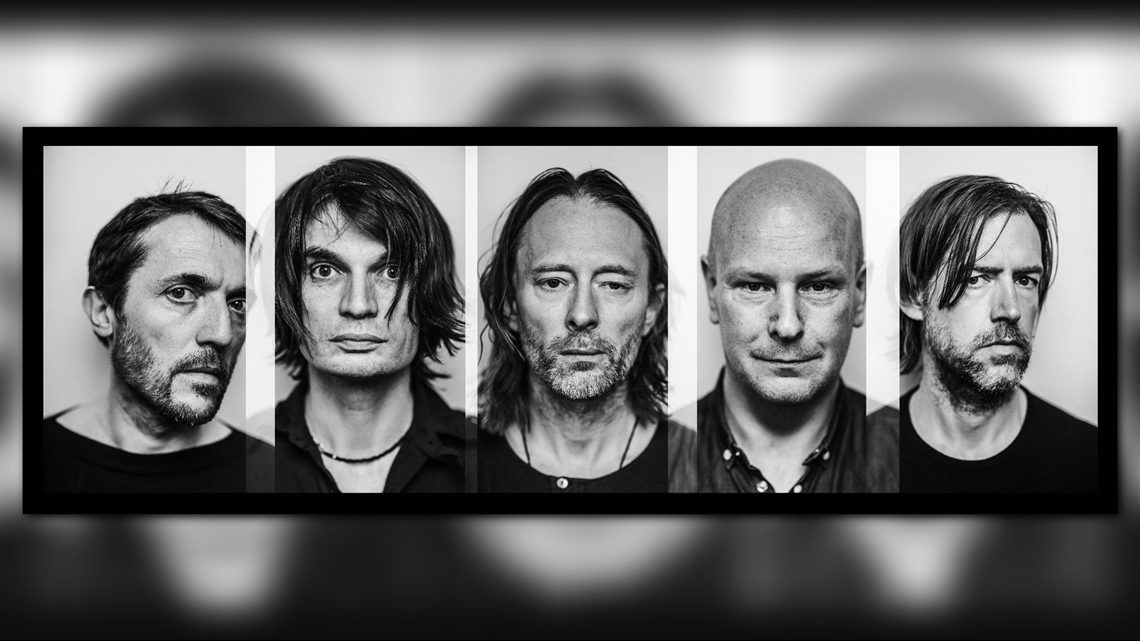
Founded in the mid-eighties by schoolboys from a suburb of Oxford, England, Radiohead – who took the name from a Talking Heads song – are the most compelling paradox in modern rock: a worldwide commercial sensation with a restless, experimental vision and underground-pioneer spirit.
They were nearly a one-hit wonder. Radiohead’s blistering 1992 single “Creep” was a belated smash, taking a year to get into Britain’s Top Ten and the American Top 40. Singer-lyricist Thom Yorke, bassist Colin Greenwood, drummer Philip Selway and guitarists Ed O’Brien and Jonny Greenwood (Colin’s younger brother) – reacted to that breakthrough with a dramatic turn away from the mainstream: the jarring guitar dynamics and harrowing balladry of 1995’s The Bends, itself a gripping prelude to the majestic art-rock futurism and dystopian warning of the 1997 masterpiece and multi-platinum best-seller, OK Computer.
Heralded as their era’s answer to Pink Floyd and the Beatles, Radiohead again turned their backs on success and expectation, entering the next century with two albums, 2000’s Kid A and 2001’s Amnesiac, that set Yorke’s seething introspection and heated, social argument in unpredictable whirls of electronic minimalism, slashing-guitar turbulence and radical textural invention.
Kid A, ironically, was Radiohead’s first Number One album in America, affirming the band’s drive to repeatedly challenge itself and its audience over the next two decades on critical and commercial triumphs such as 2007’s In Rainbows and 2016’s A Moon Shaped Pool.
Radiohead have also been instrumental in the digital transformation of the record industry, setting precedents with the pay-what-you-want release of In Rainbows and the sudden, digital drop of 2011’s The King Of Limbs.
But, as O’Brien once said, the secret to Radiohead’s innovation and independence is simple: “We start with what we don’t want to do next.”
---
RAGE AGAINST THE MACHINE
Previous induction nominations: Never
Year first eligible: 2017 (2018 ceremony)
Members included: Zack de la Rocha, Tom Morello, Tim Commerford, Brad Wilk

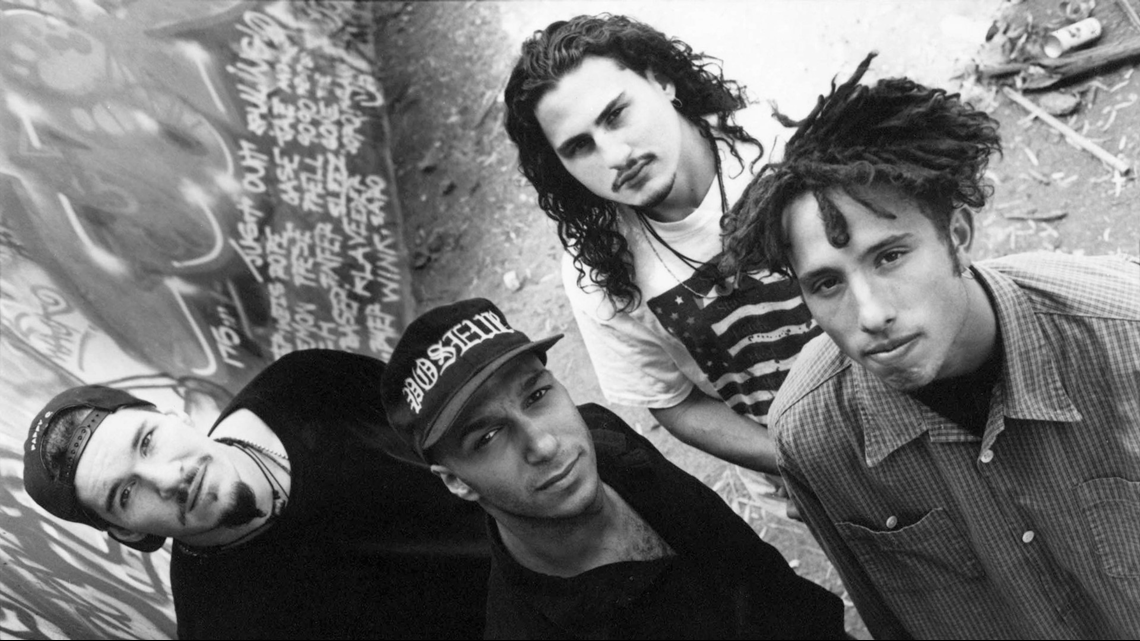
Every aspect of Rage Against the Machine throttled the status quo.
Formed in 1991, the Los Angeles quartet took aim at oppressive systems of power – cultural, political, economic and otherwise – and did everything they could to foment a revolution. Musically, Rage Against the Machine’s subversion involved molten hybrids of hip-hop, punk, metal, funk and rock.
In particular, the band’s self-titled 1992 album and 1996’s Evil Empire ushered the burgeoning rap-rock movement into the mainstream, and established Rage Against the Machine as dangerous rabble rousers who harnessed strength from detonating sonic boundaries.
Accordingly, the band members were an aggressive, unified force. Frontman Zack de la Rocha’s stinging, hip-hop-inspired vocals drew on his days fronting a hardcore band. The rhythm section of bassist Tim Commerford and drummer Brad Wilk, meanwhile, bolstered the urgency of de la Rocha’s delivery with gouging grooves and a pummeling, gale-force backbeat.
And Tom Morello’s scathing guitar style utilized distorting effects and tuning to create abrasive sounds that amplified the band's confrontational stance. Above all, although plenty of ’90s rock bands espoused social justice issues, Rage Against the Machine’s rebellious politics stood out.
Onstage and off, the band members gave a voice to the powerless, calling out local and global inequalities, and railing against censorship, corporate cronyism and government overreach.
The lyrics were smart and pointed – for example, “Freedom” highlighted the plight of Leonard Peltier, an imprisoned Native American leader, while “People Of The Sun” showed solidarity with tyrannized Mexican citizens – and tapped into timely issues.
Yet Rage Against the Machine’s lyrics continue to feel formidable and relevant: For example, 1992’s “Killing In The Name,” a stark indictment of racism and police brutality, still resonates deeply today. Rage Against the Machine were part of a musical tradition indebted to the MC5, the Clash and Public Enemy, but forged brazen protest music for the modern world.
---
RUFUS FEATURING CHAKA KHAN
Previous induction nominations: 2012
Year first eligible: 1999 (2000 ceremony)
Members included: Dennis Belfield, Al Ciner, Chuck Colbert Jr., Andre Fisher, Lee Graziano, Chaka Khan, Tony Maiden, Kevin Murphy, Ron Stocket, Bobby Watson, Willie Weeks, Hawk Wolinski

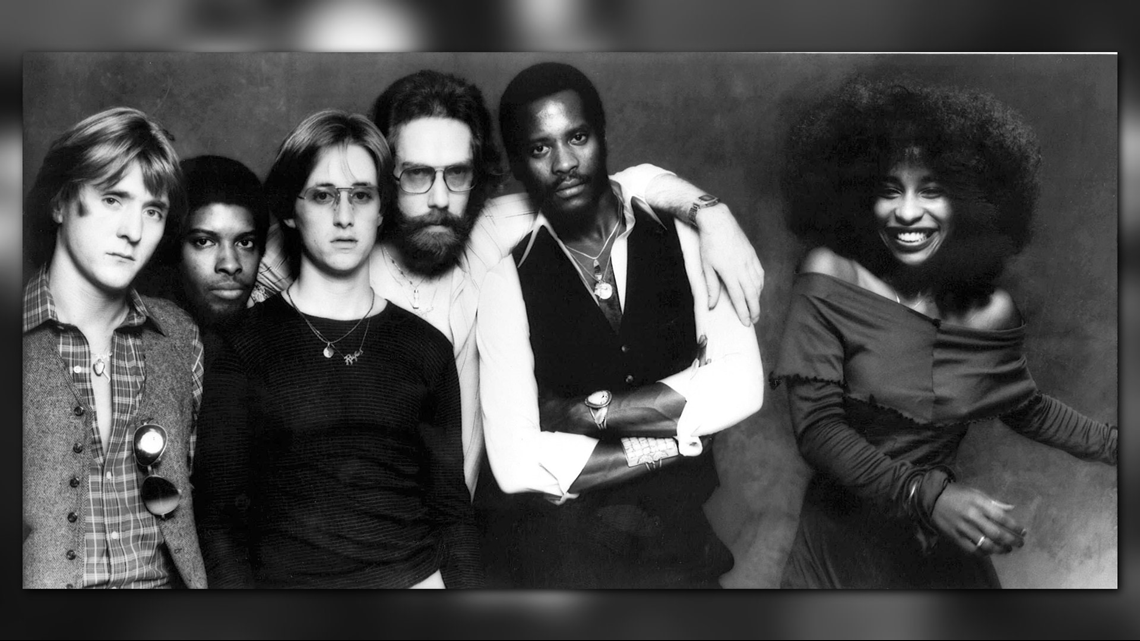
In the ’70s, as the rise of disco exacerbated racially charged divisions between rock & roll and dance music, a band from Chicago brought on the funk with a force, and grace, that defied all boundaries. First formed by black and white members of the ’60s rock band, the American Breed, Rufus acquired a secret weapon in Chaka Khan, whose voice of liquid fire and sweet incense carried a carnality as ferocious as it was distinctly feminine.
Stevie Wonder, an early fan, crafted the breakthrough hit “Tell Me Something Good,” which Rufus and Khan made an unabashed simulation of sex without uttering a single naughty word. Subsequent hits such as “Sweet Thing,” “Once You Get Started” and “At Midnight (My Love Will Lift You Up)” reinforced the muscular, fluid soulfulness the group retained through lineup changes, and the live album Stompin’ At The Savoy featuring the studio single “Ain’t Nobody,” a percolating instant classic captured its effortless, joyful virtuosity.
Khan, in her work with the band and later as a solo artist, remains one of the mightiest and most influential voices around, having inspired artists from Prince to Mary J. Blige. Already widely acknowledged as the queen of funk, Khan is also the godmother of hip-hop, soul, and as such deserves her place alongside Aretha Franklin and Tina Turner as the Hall of Fame continues to expand its reach and scope.
---
NINA SIMONE
Previous induction nominations: Never
Year first eligible: 1986
Members included: Nina Simone

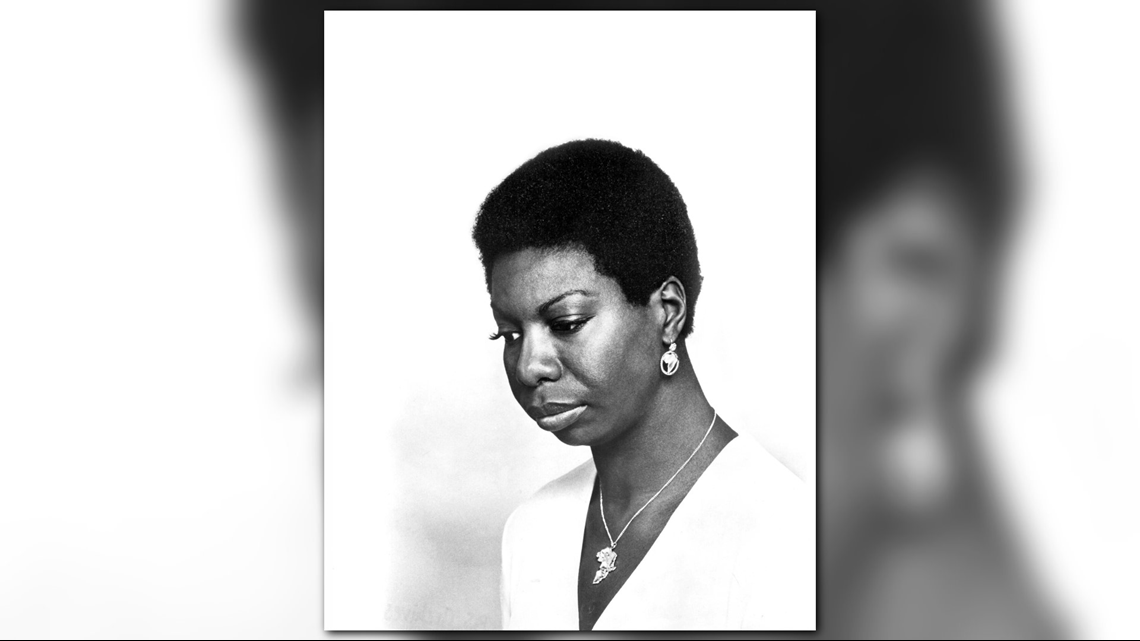
“Nina could sing anything, period,” Mary J. Blige told Rolling Stone when the magazine named Nina Simone one of the 100 Greatest Singers of All Time. And in some ways, that astonishing, unclassifiable range has made it especially difficult to assess Simone’s legacy – often considered a jazz singer (particularly because of her masterful piano playing), she was classically trained, yet her nickname was “The High Priestess of Soul.”
If anything, she claimed that she was a folk singer, and her dazzling repertoire – Israeli folk tunes, compositions by Bertolt Brecht and Kurt Weill, songs by the Bee Gees and Leonard Cohen and George Harrison, traditional ballads, spirituals, children’s songs – remains unparalleled.
Simone’s music provided the true soundtrack to the civil rights movement, and her inspiration as an artist and an activist has been celebrated by Lauryn Hill, Kanye West (who has frequently sampled her work), John Legend, Common, and Alicia Keys, who once wrote that “she made me want to live life, learn and experience it earnestly and use my voice to say SOMETHING!”
Simone’s groundbreaking compositions like “Mississippi Goddam” and “Four Women” defined a songwriting voice that was proudly, defiantly black and female. Her radical rearrangements of other songs have been covered by everyone from George Michael to the Animals, Whitney Houston to Jeff Buckley. An icon whose tortured life was the subject of an Oscar-nominated documentary, Nina Simone was a unique creative force. “She was an overwhelming artist, piano player, and singer,” said Bob Dylan. “Very outspoken and dynamite to see perform...the kind of artist that I loved and admired.”
---
SISTER ROSETTA THARPE
Previous induction nominations: Never
Year first eligible: 1986
Members included: Rosetta Nubin

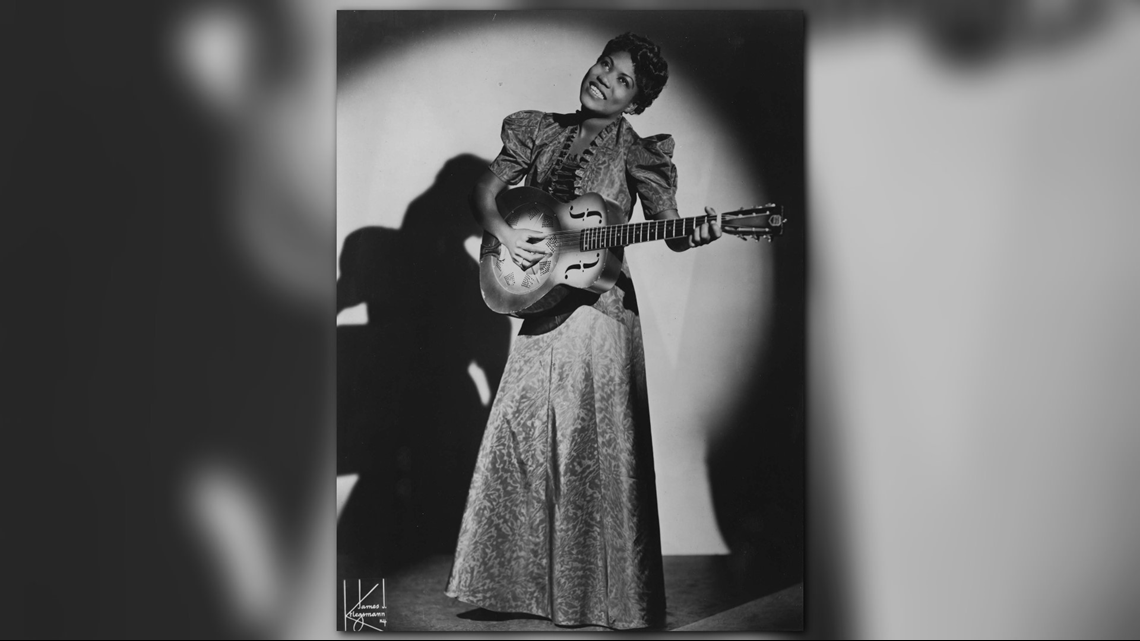
Sister Rosetta Tharpe is one of the essential figures in the history of rock and roll.
If she had not been there as a model and inspiration, Elvis Presley, Little Richard, Johnny Cash, Jerry Lee Lewis and other rock originators would have had different careers. No one deserves more to be in the Rock and Roll Hall of Fame.
Sister Rosetta became famous in 1938 with a record called “Rock Me.” She was a star through the 1940’s, a black woman singing gospel music to the accompaniment of her own driving electric guitar-howling and stamping.
Her 1945 recording “Strange Things Happening Every Day” has been credited as the first gospel song to cross over to the “race” (later called “R&B”) charts – reaching Number Two and becoming an early model for rock and roll. She was a sensation, selling out arenas into the 1950’s.
In 1947, Sister Rosetta was the first person to put a 14-year-old boy named Little Richard Penniman on a stage. It changed Little Richard’s life – he decided right then to become a performer. In 1951, 25,000 fans paid to attend her on-stage wedding at Griffith Stadium in Washington DC. She was the hottest act on stage with a guitar.
She became a model for Elvis Presley, Carl Perkins and Jerry Lee Lewis. Johnny Cash called her his favorite singer and biggest inspiration. By the early ‘60s, the musical revolution she inspired had forgotten her – so Sister Rosetta went to England and played electric guitar for the young blues fans of London and Liverpool.
Without Sister Rosetta Tharpe, rock and roll would be a different music. She is the founding mother who gave rock’s founding fathers the idea.
---
LINK WRAY
Previous induction nominations: 2014
Year first eligible: 1986
Members included: Link Wray

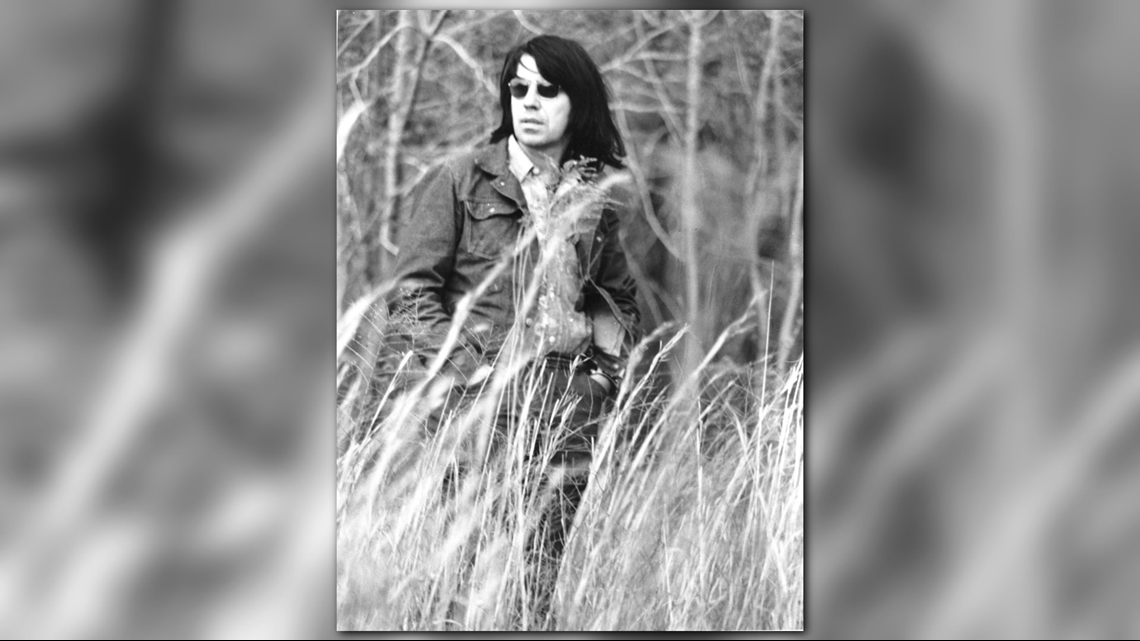
Legions of rock guitarists on every continent testify that the biggest bang of all was the first time they heard “Rumble” by Link Wray (1929-2005), a dangerous slab of reverberating power chords and raw distortion laid down in 1958.
In the summer of “Purple People Eater,” “Witch Doctor” and “Patricia,” the rebellious sonic onslaught of “Rumble” cut through Top 40 radio like a steamroller. This was more than a decade before power chords even had a name; a decade after that, in the heat of the punk era, Wray’s collaboration with Robert Gordon left every retro-rockabilly guitarslinger in the dust.
The impact of Link Wray, one of Rolling Stone’s Top 100 Guitarists of All Time, can be heard in generations of American and British metal, punk, grunge, thrash, and psychobilly rockers, all of whom have claimed him and “Rumble” (and follow-ups “Raw-Hide” and “Jack The Ripper”) as their own. Jeff Beck, Jimmy Page, Eric Clapton, Jimi Hendrix and Bruce Springsteen head the A-list of Rock and Roll Hall of Fame Inductees who bow to Link Wray’s abiding influence.
Pete Townshend simply calls him the King: “If it hadn’t been for Link Wray and ‘Rumble,’ I would never have picked up a guitar.” Even Iggy Pop is an acolyte: “I left school emotionally after hearing ‘Rumble.’” The DIY recordings that North Carolina Native American Link Wray made on his three-track machine in the family’s converted chicken coop are the holiest of six-string grails.
“The major modus operandi of modern rock guitarists,” wrote CubKoda, “the blueprints for heavy metal, thrash, you name it...if Duane Eddy twanged away for white, teenage America, Link Wray played for juvenile delinquent hoods, plain and simple.” The “Rumble” goes on forever.
---
THE ZOMBIES
Previous induction nominations: 2014, 2017
Year first eligible: 1989 (1990 ceremony)
Members included: Rod Argent, Colin Blunstone, Paul Atkinson, Hugh Grundy, Chris White

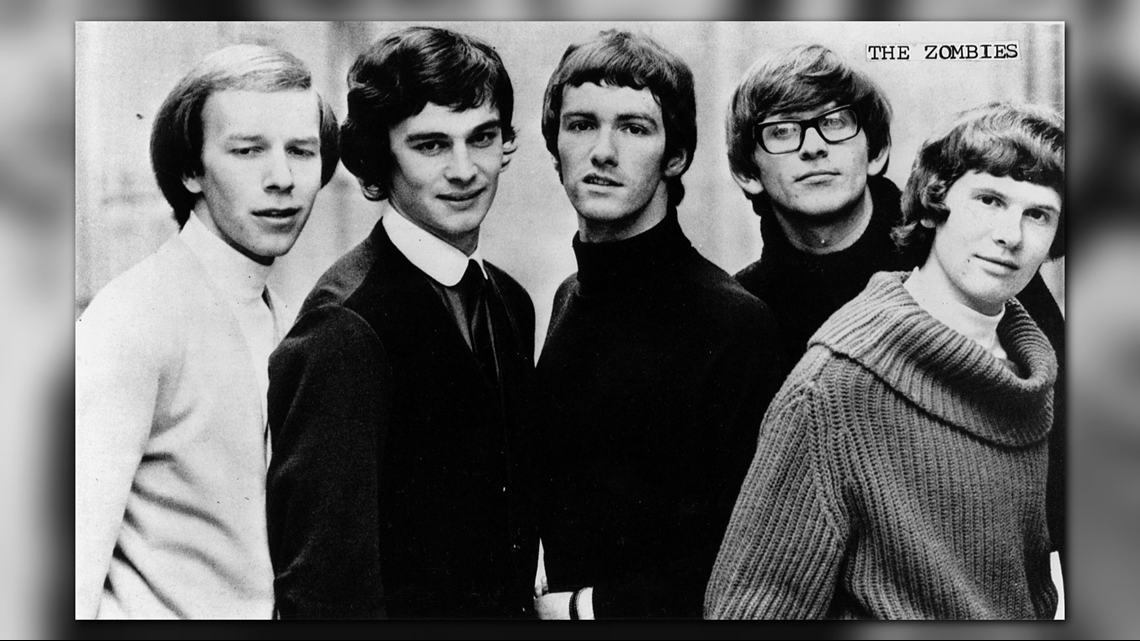
One of the consummate joys of the first wave of the British Invasion was the startling variety of sounds and styles that emerged month after month in that heady halcyon era. At one end of the scale were the raw, blues-drenched disciples of American blues and R&B (Rolling Stones, Animals, Yardbirds), and at the other end were the more studied, sophisticated, intricately arranged atmospherics of the Zombies. There was no other band whose sound filled space as gorgeously and completely as the Zombies: the jazz-inflected electric piano of Rod Argent, the choirboy vocals of him and his St. Albans schoolmates, bassist Chris White and lead singer Colin Blunstone. Other schoolmates, Paul Atkinson on guitar and vocals, and drummer Hugh Grundy rounded out the classic original lineup, which endeared itself overnight to the most loyal and dedicated army of fans to which any rock band can lay claim.
At the end of the day, it always comes back home to the triad of career defining hits by the Zombies that beg the question: Where were you the first time you heard “She’s Not There” or “Tell Her No” or “Time Of the Season?” Their second and final album Odessey And Oracle has earned its reputation (and its spot inside the Top 100 on Rolling Stone’s list of the "500 Greatest Albums Of All Time") alongside such masterworks as the Beatles’ White Album and the Beach Boys’ Pet Sounds. Rod Argent’s eponymous band gave majesty and definition to the ’70s, but the Zombies, which he and Colin Blunstone have been helming on records and tours for the past decade, are truly a rock band for all seasons.
-
---
All bios listed above provided by the Rock and Roll Hall of Fame.


